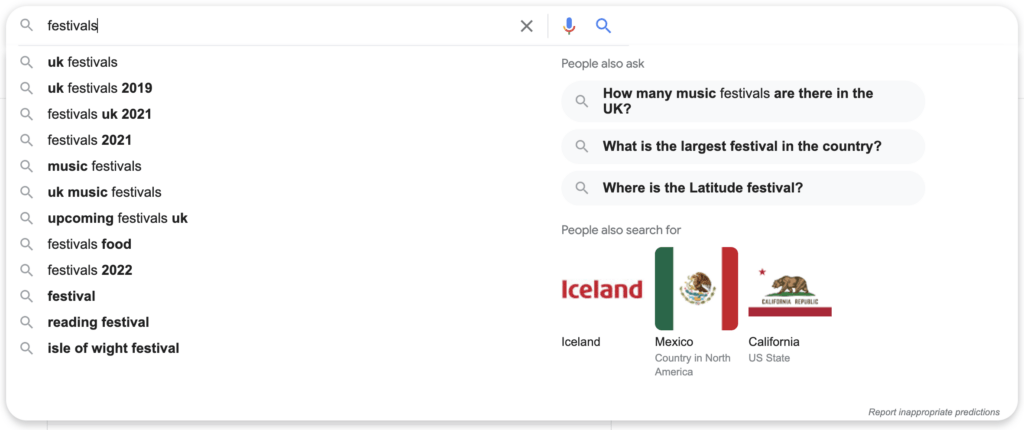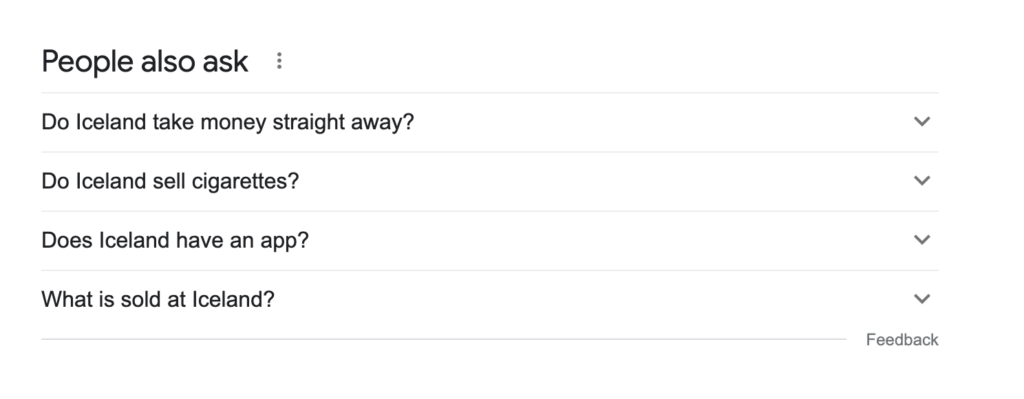Have you spotted the new Google feature which has appeared in the search bar drop-down recently?

Google’s people also ask feature explained
This feature appears when a user conducts an organic search and will show on the right-hand side of the search results with potential questions related to the search or possible other searches related to it.
While this feature has been around for about 3 years, Google has recently updated its look, making it appear to be a “new” search feature. In the recent update, they have changed its positioning and included the addition of a logo in the search results which we think is a great addition and definitely makes it visually appealing.
Is there a purpose behind Googles new search result feature?
When it comes to search intent, the user is looking for the information as closely related to their search as possible. What better way than to add the additional columns in the search results to ensure the user is taken on the correct path. After all, Google wants pages that match the search intent as high up in the results as possible.
For many years, Google has had the ‘People also ask’ feature in its search engine. This appears at the top of the search results. This section is also known as position zero and while it works in the same sort of way as the new search feature, there are differences. The new “people also ask” facelifted search feature will appear on all devices as the user starts to type, this can help with finding the desired search much faster. The position zero feature will appear in search results after the search term has been queried in Google.
This has two benefits to the user:
1. It allows them to browse more high-value content related to that term in one go using the drop-down arrows,
2. and, it can help the user navigate to a more niche or specific search.
How accurate is the people also ask feature in Google?
It appears that there could be some work to do when it comes to showing relevant searches! The supermarket that we all know and love, Iceland. Why does it appear when searching for festivals? The same could be said for Mexico and California. Perhaps Google knows something we don’t. Is the super-advanced algorithm telling me that Iceland is commonly searched along with festivals? I guess we won’t know for sure. This feature is supposed to direct us to the most relevant searches, based on what we are trying to look for in that moment, and based on our search history, so it will be interesting to see what suggestions each of you get for the same search query!
It’s exciting to see Google create new changes to its appearance and the way it works. Just compare it now to when it first launched in 1998.
For help with your Search Engine Optimisation, or any other aspect of digital marketing, get in touch with the Laser Red Team today!